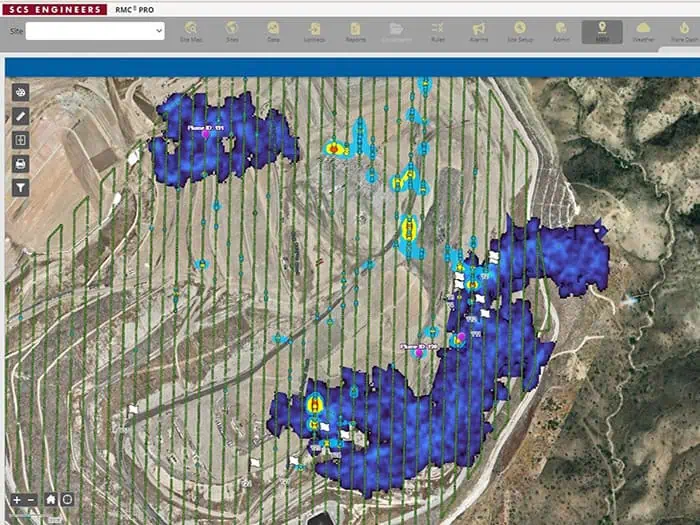


The U.S. Environmental Protection Agency USEPA Landfill Technology Workshop will highlight the state of advancing technologies, including their ability to detect and quantify methane and discuss how these technologies might fit into a regulatory framework. SCS Engineers’ Phil Carrillo will participate in the workshop and experts Melissa Russo, Andy Sheppard, and David Greene will be available to answer questions.
Registration is closed, but if you were not able to register before the deadline, please contact Nan Albaladejo by email () or by phone (703-705-4438) to be registered manually (if space is available). Since the workshop appears fully booked, below are some resources regarding the proven and emerging landfill methane detection and measurement technology that could work for you and the challenges they help address.
Compounded by rising labor costs and regulations, the three major challenges for landfill owners and operators are mitigating toxins, liquids, and greenhouse gases. Landfills and solid waste operations across North America use drones and remote monitoring and control applications to optimize operations and address these major challenges, including surface emissions monitoring.
Combine sensors with SCS drone-based technologies to monitor landfill gas (LFG) emissions and detect leaks, eliminating a significant portion of the manual effort from quarterly compliance while performing operations more safely and accurately. Captured emissions data is useful for optimizing well fields, tackling odor issues, and quantifying emissions for renewable natural gas projects.
In the videos below and USEPA Landfill Technology Workshop, a 2-day meeting sponsored by the agency focuses on developing (and benefits associated with) advanced methane monitoring technologies applied to landfill monitoring. SCS Engineers expert Phil Carrillo will participate in the Technology Panel Discussion, and expert Melissa Russo will attend and be available to answer questions.
USEPA Landfill Technology Workshop covers these topics as follows,
Free, on-demand video resources
Drones, sensors, LiDAR, weather, and IoT, our landfill technology experts demonstrate how technologies work together to investigate gas collection and control systems (GCCS), liquids, airspace, stormwater, weather, wellheads, flares, pumps, temperature, and other equipment. Technology can help reduce labor and reaction time by automating what once took many hands in the field.
Video: 2024 Landfill, RNG, and Compost Monitoring Technologies Based on successful client installations, the SCS RMC team shows how landfill and facility owners/operators can respond in hours to satellite imagery of methane plumes, adjust operations to control odors based on weather conditions and collect methane emissions data in a fraction of the time it takes with traditional ground monitoring.
Video: Optimizing Landfill Technologies for Greater Efficiencies Part 1. Using drones and GIS integration for managing landfill gases and liquids. These combinations of technologies can even help you see underground conditions. It’s like having x-ray vision to manage GCCS and support leachate management while maximizing well-field pull.
Video: Optimizing Landfill Technologies for Greater Efficiencies Part 2. Panelists explain which technology is best for what and when integrating these technologies better serves your purpose and budget.
Website: USEPA Landfill Methane Outreach Program (LMOP)
Website: SCS Remote Monitoring and Control®, SCS RMC®